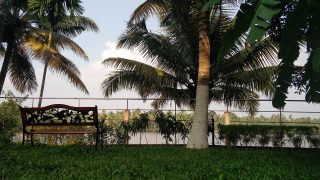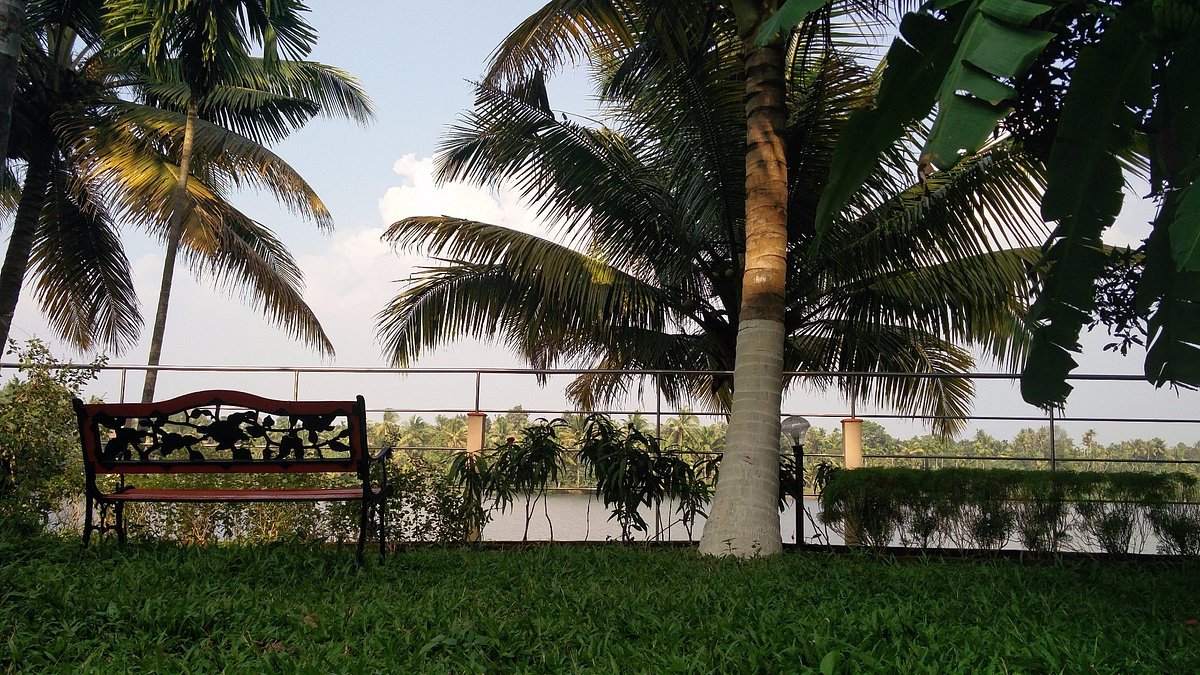The Village Nook by Sarathy Ayurveda

by Sarathy Ayurveda
Karumalloor, Naranathu Road, Aluva, Ernakulam, 683520, Kerala, India
Ph: +91-484-2608309 Mob: +91-9895142321, +91-9847997321
email: mails2sarathy@gmail.com Website: www.sarathyayurveda.com
Social Media: Sarathy Ayurvedic Hospital on Facebook, Instagram, LinkedIn, Twitter
About Us
- River side property on the banks of Periyar river
- 8 spacious river facing rooms with all modern amenities and 24X7 front desk and security
- River facing rooms with free Wi-Fi and smart TV
- Bathrooms with Jacuzzi
- Kerala Ayurveda Panchakarma wellness and treatment centre
- Ayurveda Consultation and Therapy with 24X7 doctors and nursing staff attention
- Spacious hygienic Ayurveda Therapy rooms
- Yoga, meditation and physiotherapy services
- Healthy vegetarian Ayurveda diet
- Traditional Kerala Ayurveda food
- Patient Counseling
- Healthy lifestyle education
- Personalized Care
- Experienced doctors
- Skilled staff
- River side sunning area and hammocks
- Green surroundings
- Free bicycling
- Village walk through paddy fields and farms
- Homely ambience and hospitality
- Amenities like Business Centre, Meeting Room, Breastfeeding Area, Play Area, Prayer Room
- Patient Safety Devices and Emergency Management trained staff
- Airport Pick Up, Drop Off, Travel Desk, Currency Exchange
Location: 17 km from Cochin International Airport, 10 km from Aluva Metro Station, 18 km from Lulu Mall
Tourist Attractions:
Doctors and Specialties
- Lathika PK BAMS MDHA Experience of 35 years
Specialist in Kerala Ayurveda Panchakarma, Stroke Rehabilitation, Ayurveda Cancer Care
- Valsaladevi K BAMS FAGE MBA CNAD CAAM YIC Experience of 30 years
Specialist in Kerala Ayurveda Panchakarma, Child Health, Autism, Ayurveda Diet, Yoga Therapy
- Gayatri S BAMS MS (Obstetrics & Gynecology) Dip. Cosmetology, YIC Experience of 10 years
Specialist in Women Health, Gynecology, Pregnancy Care, Infertility, Post Natal Care, Cosmetology
Dr. Karthik K Nandan BAMS MS (Ayurveda Surgery), YIC, MA (DM) Experience of 12 years
Specialist in Ano-rectal Diseases, Piles, Fissure, Fistula, Orthopedics, Marma, Varicose Veins
- Resident Medical Officer
Specialist in Kerala Ayurveda Panchakarma
Diseases treated at Sarathy Ayurvedic Hospital
- General Medicine and Lifestyle Diseases: Obesity, Weight Loss, Diabetes, Rheumatism, Gastric Disorders, Hormone Problems, Heart Problems, Vitamin Deficiencies, Anemia, Liver Diseases, Cancer, Eye Diseases, Headache, Migraine, Stress, Anxiety, Panic Attacks, Mental Disorders, Allergy, Asthma, Skin Diseases, Psoriasis, Eczema
- Spine and Joint Orthopedics: Arthritis, Rheumatoid Arthritis, Gout, Systemic lupus erythematosus-SLE, Osteoporosis, Osteoarthritis, Knee Joint Pain, Shoulder Joint Pain, Frozen Shoulder, Low back Pain, Cervical and Lumbar Spondylosis, Cervical Spondylitis, Lumbar Spondylitis, IVDP-Intervertebral Disc Prolapse, Multiple Joint Pain
- Neurology: Neuropathy, Carpal Tunnel Syndrome, Cerebral Palsy, Multiple Sclerosis, Syringomyelia, Transverse Myelitis, Cerebral Atrophy, Guillain-Barre Syndrome, Multiple Sclerosis, Muscular Dystrophy, MND, Parkinson’s Disease, Alzheimer’s Disease, Senile Dementia
- Ortho-Neuro-Musculo Rehabilitation: Sports Injuries, Brain and Spinal Cord Injury, Paralysis, Stroke Rehabilitation, Accident Rehabilitation, Stress Injuries, Achilles Tendon Injury, Ligament Injury, Tennis Elbow, Golfer’s Elbow, Plantar Fasciitis
- Pediatrics: Autism Spectrum Disorders, Learning Disabilities, Developmental Disorders, Cerebral Palsy, Children Health Problems, Type 1 Diabetes, Obesity, Vision Problems in children
- Women Health: Menstrual problems, Painful Periods, Dysmenorrhoea, Low Menstrual Flow, Excessive Menstrual Bleeding, Uterine Bleeding, Leucorrhoea, Vaginal Discharges Irregular Menstrual Cycles, PCOS, Uterine Fibroid, Endometriosis, Uterine-Ovarian-Cervical Cancers
- Female Sexual Problems and Fertility: Primary and secondary Infertility, PCOS, Ovum Disorders, Endometriosis, Endometrial Thinness, Habitual Abortion, Cervix Insufficiency, Low Libido, Vaginal Dryness, Painful Intercourse
- Post Natal Care: After Normal Child Birth, After Caesarian Section, Stretch Marks, Loose Tummy, Skin Sagging, Tears, Pelvic Issues, Muscle Tone Issues, Back Pain, Breastfeeding Issues, Post Natal Depression, Mood Swings
- Male Sexual Diseases: Infertility Treatment, Male Infertility, Varicocele, Low Sperm Count, Sperm Disorders, Erectile Dysfunction, premature ejaculation, Low Libido
- Veins and Ano-rectal Diseases: Diseases: Piles, Fissure, Fistula, Varicose Veins, Varicose Ulcers
- Cosmetology: Hair Care: Hair loss, Frizzy Hair, Dandruff, Split Ends, Dull Hair, Damaged Hair, Receding Hairline, Baldness, Greying, Thinning, Ingrown Hair, Facial Hair
- Cosmetology: Skin and Face Care: Dry skin, Oily Skin, Pigmentation, Blemishes, Skin Tan, Dark Circles, Wrinkles, Sagging Skin, Ageing Skin, Dull Skin, Acne, Black Heads, White Heads, Stretch Marks, Dry and Chapped Lips
- Yoga and Meditation: Wellness Yoga, Daily Yoga, Clinical Yoga, Disease based Yoga Therapy, Personalized Yoga Training, Hatha Yoga, Power Yoga, Pranayama, Breathing Exercises, Pranayama Therapy, Meditation, Auto-Suggestion Therapy
- Diet and Nutrition: Wellness Diet, Ayurveda Diet, Diet Counselling, Diet Consultation, Ayurveda Cookery Classes, Ayurveda Cooking Demonstration, Disease based Personalized Diet Charts, Prakruthi based Diet Charts
Patient Counselling: Professional Stress, Domestic Stress, Phobia, Marital Problems, Sexual Problems, Learning Problems, Unexplained Stress, Panic Disorders





